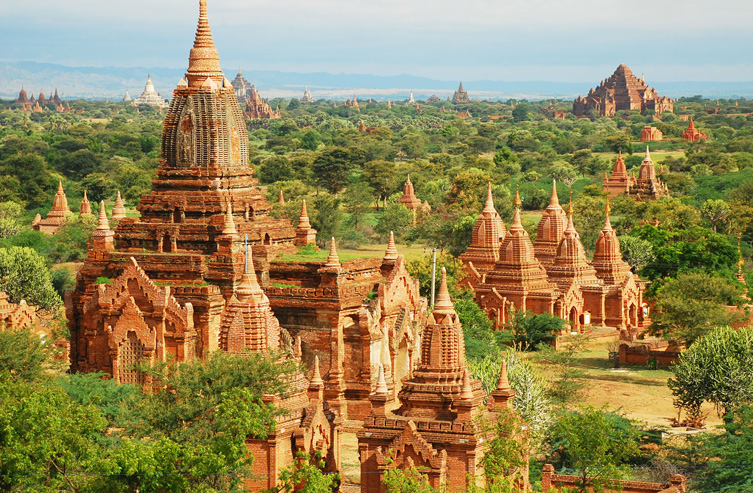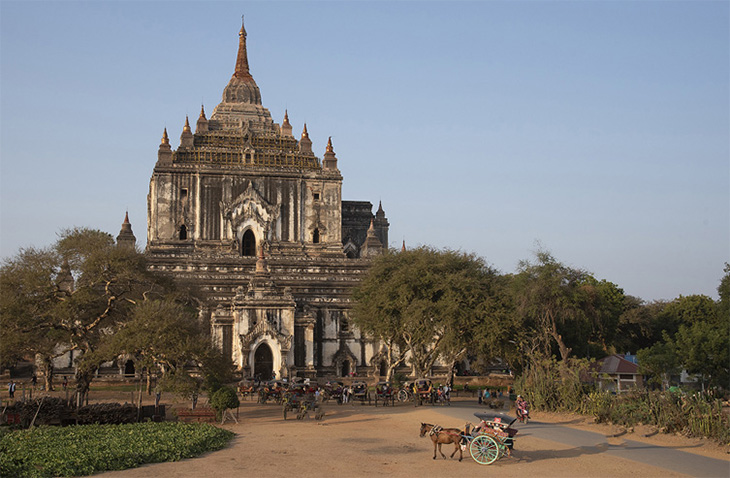
The afternoon sun had risen high in the sky, beating down on me as I climbed onto a moped that I had rented for about $5 and started testing in the round driveway of my hotel. I was told to go faster and not to be afraid — easier said than done. As I finally got the courage to head off down the long road toward the closest grouping of temples, the dust kicking up in tufts behind me, I quickly realized this would be a special afternoon.
Bagan rests along the banks of the Ayeyarwady River in Myanmar, a country formerly known as Burma and tinged with a controversial political history, years of isolationist policy, and a cache of what feels like totally untouched cultural treasures to discover. Today, even some of the most remote locations in the world feel overrun by tourism, but when I visited Bagan last year, it still remained largely empty.
Now, Bagan has been included on UNESCO’s World Heritage List, finally recognizing its thousands of red-hued temples and stupas from the 11th to 13th centuries. But unlike similar sites — Cambodia’s Angkor Wat, which saw more than 2 million tourists in 2017 — the quiet roads of Bagan, often interrupted only by the roar of my moped’s engine, lent a surreal quality to the breathtaking temples.

Ananda Temple
This isn’t the first time Bagan has been nominated — it was first put up for consideration as a World Heritage Site in 1995, according to Reuters, but the military regime that ruled the country at the time was accused of ignoring restoration advice. In 2011, the country started to open up and free elections were held in 2015, according to the BBC. Two years later, however, the army retaliated against the Muslim Rohingyas, forcing hundreds of thousands to flee to neighboring Bangladesh in what the United Nations has said “seems a textbook example of ethnic cleansing.” Later, a pair of Reuters journalists were arrested in Myanmar for their reporting on the Rohingya crisis before they were freed earlier this year, according to the BBC.
Myanmar, and Bagan by extension, is as complicated as it is beautiful. You cannot ignore atrocities, but I also believe that it is through travel, shared experiences and simply talking to one another that we can create a more human society.

That Byin Nyu Temple
Follow a magnitude 6.8 earthquake in 2016 that damaged 200 temples, Bagan now has UNESCO World Heritage status and, hopefully, that’s a sign that conservation efforts for the site will be prioritized. But I don’t think I’ll ever experience that same kind of rare solitude and tranquility.
When I returned home, I contemplated the politics and the history, but what really stuck with me were the people: the vendor who was simply happy to see someone, the hotel employee who cheerfully pointed out the temple on the resort’s property.
To me, Bagan felt like a last frontier of sorts, something I was both shocked and elated to have discovered — and something I don’t think I’ll likely see again.

 (+95-9) 7757 30372
(+95-9) 7757 30372


